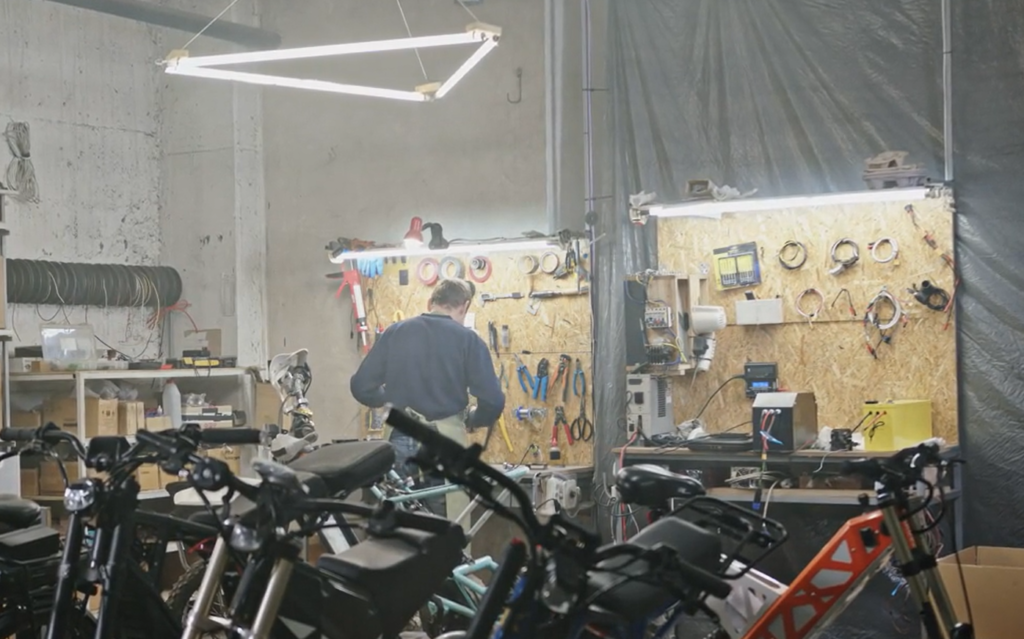While the price of copper is currently making many a trader dizzy, it is not the only material to have been hit by rising prices in recent years. In 2024, the prices of building materials such as concrete, wood and steel will continue to rise, with worrying implications for all construction projects.
Rising materials prices in Belgium: what are the figures?
The I-2021 index was introduced in November 2020 to modernise price monitoring in the construction sector. It tracks the rise in 60 products grouped into 11 categories. Available for public download from the Belgian Government website (1)A quick analysis reveals a clear rise in the prices of the overwhelming majority of building materials.
| Category | Index Nov 2020 | Index Apr 2024 | Change (%) |
|---|---|---|---|
| Metallurgy | 128.57 | 179.20 | 39.37% |
| Sawing and planing wood | 114.79 | 159.54 | 38.92% |
| Manufacture of articles in wood, cork and basketry | 123.95 | 180.23 | 45.37% |
| Manufacture of paints, varnishes and inks | 137.08 | 175.08 | 27.73% |
| Manufacture of other chemical products | 108.65 | 143.30 | 31.93% |
| Cement | 111.54 | 204.18 | 83.05% |
There were double-digit rises, with a record for cement, metals and wood.
What are the causes of these price increases for materials in Belgium?
There are 3 main reasons for these substantial rate increases.
The Covid-19 pandemic
The global health crisis caused by Covid-19 quickly had an impact on the building materials market. A series of confinements and travel restrictions caused major disruption to global production and distribution chains. A large number of factories were forced to reduce or even halt their operations, leading to shortages of basic building materials such as concrete, steel and aluminium.
Order books were left hanging until the post-pandemic economic recovery led to an unprecedented demand for materials. Supply was unable to keep up with demand, putting extreme pressure on prices.
War in Ukraine and the energy crisis
The tense situation with Russia is reminiscent of the days when the Iron Curtain divided the world into East and West. The end of trade relations with Russia has challenged Europe's energy system, but above all it has led to a meteoric rise in energy prices, impacting on the production costs of materials such as cement, steel and concrete.
The war in Ukraine has disrupted supply chains, particularly for materials from Russia. As a result of the sanctions imposed on Russia, imports of key iron and steel products for the construction industry have been restricted.
Speculation and increased demand
Given the global instability in the energy sector, all the conditions are ripe for a degree of speculation on the raw materials markets. So it's not surprising to see a general rise in the price of building materials.
In addition, the European emphasis on energy renovation policies in order to comply with the various climate change protocols is resulting in increased demand for building materials, and therefore higher prices.
What impact will this have on the construction industry?
Faced with rising costs, Belgians may be more cautious about investing in bricks and mortar. Many construction projects have been delayed or put on hold, particularly those involving new homes, because of rising costs and higher interest rates.
Companies' order books are less full, and construction companies are finding it difficult to meet the deadlines and costs initially agreed with their customers. Supply lead times are increasing, as are the prices of materials.
For example, housing starts have fallen by almost 70,000 units in 2023 and are expected to fall by a further 50,000 units in 2024. (2)This is having a direct impact on demand for materials such as ready-mix concrete, demand for which could fall by more than 10% this year.
What practical solutions are there to deal with these major increases in the price of building materials?
Faced with these various problems, a number of solutions are emerging to keep construction projects on track without dipping ever deeper into savings accounts.
Common sense: optimising purchasing
Today more than ever, your negotiating skills are put to the test when it comes to your building project and the materials needed to make it a reality. Like a trader, you can plan your purchases according to forecasts of price rises, and it's also in your interest to negotiate long-term contracts with your energy or materials suppliers to lock in prices and avoid being trapped by an unexpected rise.
The Qijco solution: an effective alternative
Qijco is a platform for the hire and sale of tools and materials between private individuals and/or professionals. It offers an innovative solution for placing quick classified ads to sell or hire tools or materials.
For individuals Qijco offers a wide range of tools and materials at competitive prices, making it possible to carry out renovation or construction projects at lower cost and thus limit the impact of this rise in the price of materials.
For professionals The platform also enables companies to hire or buy the equipment and materials they need for their worksites, while optimising their costs and resources. What's more, the platform also allows them to put their tools and machinery up for sale or hire, giving them greater visibility.
Adapting projects
You could consider buying alternative materials that are less expensive and sometimes more durable, such as
Biobased materials
Opt for materials such as glued laminated timber, hemp or flax, which are not only durable but also often less expensive than traditional materials. For example, hemp concrete costs around €120/m³, or 20 % less than traditional concrete, and offers good thermal and acoustic insulation properties while reducing the carbon footprint.
Recycled materials
Use recycled materials such as recycled concrete, recycled steel or reclaimed bricks. These materials are becoming increasingly accessible and can significantly reduce construction costs. Recycled concrete, for example, can cost up to 30 % less than virgin concrete and is used in the construction of roads and buildings, reducing the demand for virgin materials and the associated costs.
Revising your budget
It's not necessarily the solution you want to hear about, but it can be a life-saving one. You can adjust budgets to take account of price increases.
Plan in detail
You can establish precise and flexible schedules for your projects, taking into account potential supply delays. For example, by including safety margins of 10 to 15 % in your schedules to absorb unforeseen delays and price fluctuations.
Reviewing finances
You can recalculate budgets to take account of anticipated increases in the cost of materials, or include contingency provisions of around 5 to 10 % of the total budget to deal with sudden price rises. For example, if you anticipate a 10 % increase in the cost of materials, add this forecast to your initial budget to avoid any financial surprises.
References :




